#june 8 1974
Explore tagged Tumblr posts
Text
Tornado Quest Top Science Links For June 1 - 8, 2024 #science #weather #climate #tornado #hurricane #drought #okwx
Greetings everybody! Thanks so much for stopping by. This has been an above average year to date for tornado activity so we’ll continue with our overview of tornado safety. With the Atlantic hurricane season now officially upon us, I’ve got a review of this years hurricane outlook and a link on hurricane safety. Don’t miss our weekly look at the latest US Drought Monitor update. There’s plenty of…

View On WordPress
#air quality#astronomy#climate#climate change#climate crisis#climate emergency#climate report#climatology#environment#eu#europe#exoplanet#extreme heat#extreme weather#fossil fuel#health#heat#hurricane#june 8 1974#meteorology#national weather service#oklahoma#plastic#plastic pollution#pollution#public health#recycling#renewable energy#renewables#science
0 notes
Text

Prince Rainier III of Monaco, Princess Grace, and their children arrive at L'Elysee Palace, in Paris, for lunch with President Giscard d'Estaing and his family on June 8, 1974.
8 notes
·
View notes
Text










70's Electric Light Orchestra CASHBOX Advertisements 1. May 20th, 1972 2. June 9th, 1973 3. March 16th, 1974 4. July 3rd, 1976 5 and 6. October 23rd, 1976 7. October 9th, 1976 8. November 27th, 1976 9. July 1st, 1978 10. June 23rd, 1979 (via: archive.org)
229 notes
·
View notes
Text







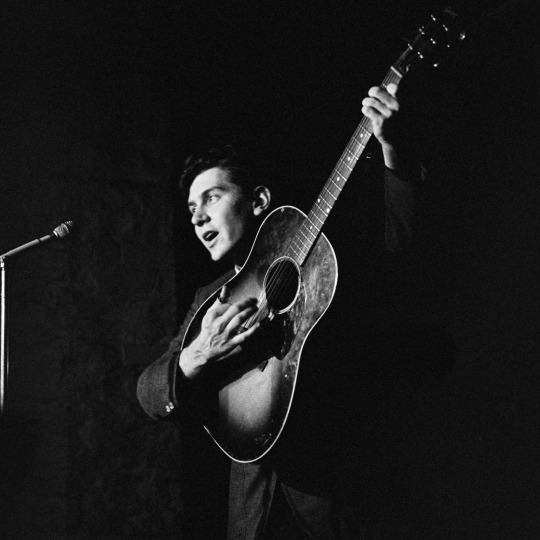





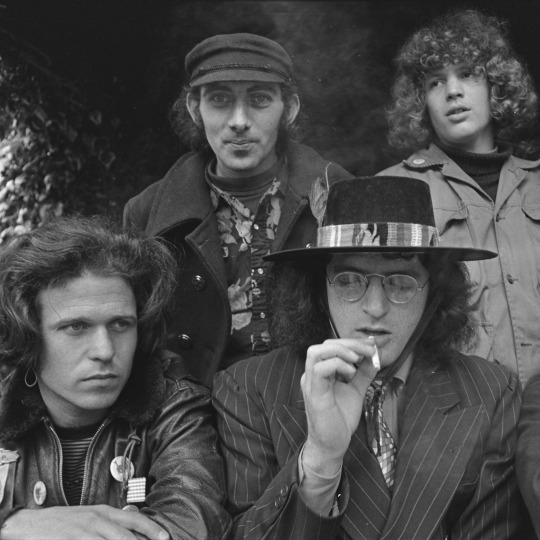
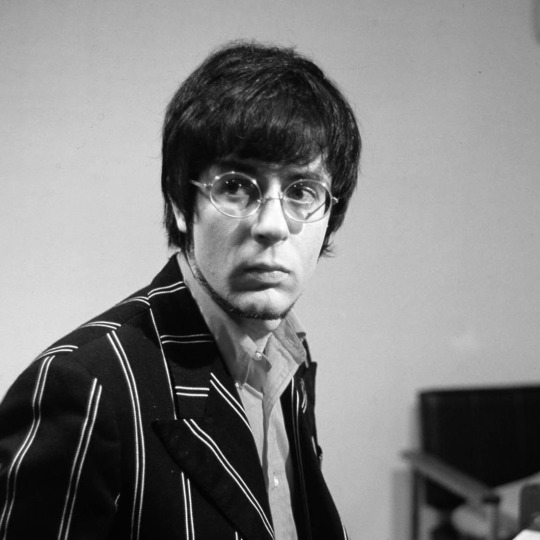
Jewish musicians of the 1960s
✡︎ Bob Dylan (born Robert Allen Zimmerman; May 24, 1941)
✡︎ Lesley Gore (born Lesley Sue Goldstein; May 2, 1946 – February 16, 2015)
✡︎ Leonard Cohen (September 21, 1934 – November 7, 2016)
✡︎ Barbra Streisand (born April 24, 1942)
✡︎ Marty Balin (born Martyn Jerel Buchwald; January 30, 1942 – September 27, 2018) and Jorma Kaukonen (born December 23, 1940) of Jefferson Airplane
✡︎ Robby Krieger (born January 8, 1946) of The Doors
✡︎ Paul Simon (born October 13, 1941) and Art Garfunkel (born November 5, 1941) of Simon & Garfunkel
✡︎ Phil Ochs (December 19, 1940 – April 9, 1976)
✡︎ Cass Elliot (born Ellen Naomi Cohen; September 19, 1941 – July 29, 1974) of The Mamas & The Papas
✡︎ Mary (December 28, 1948 – January 19, 2024) and Elizabeth Weiss (born November 27, 1946) of The Shangri-Las
✡︎ Neil Diamond (born January 24, 1941)
✡︎ Janis Ian (born Janis Eddy Fink; April 7, 1951)
✡︎ Robbie Robertson (born Jaime Royal Robertson; July 5, 1943 – August 9, 2023) of The Band
✡︎ Gary Hirsh (March 9, 1940 – August 17, 2021), Barry Melton (born June 14, 1947), Joseph Allen "Country Joe" McDonald (born January 1, 1942), and David Cohen (born August 4, 1942) of Country Joe and the Fish
✡︎ Manfred Mann (born Manfred Sepse Lubowitz; October 21, 1940)
#1960s#mine#music#jewish#bob dylan#lesley gore#leonard cohen#barbra streisand#marty balin#jorma kaukonen#jefferson airplane#robby krieger#the doors#paul simon#art garfunkel#simon and garfunkel#simon & garfunkel#phil ochs#cass elliot#the mamas and the papas#the shangri las#neil diamond#janis ian#robbie robertson#manfred mann#country joe and the fish
165 notes
·
View notes
Text

The prowler, a powerful monster with the body of a constrictor snake and a head resembling a carrion crawler, with an almost irrevocable save-or-die attack (Erol Otus, "Featured Creature" in Dragon 7, June 1977).

The prowler's gaze turns victims into "zombeis" that will be implanted with eggs, hatching in 2-8 days. The "3 Patriarchs" needed to reverse the effect means three level 8 clerics, the highest and rarest level for that class in the 1974 OD&D rules.
#D&D#Dungeons & Dragons#Erol Otus#dnd#OD&D#Dragon magazine#prowler#the prowler#monster#Featured Creature#TSR#Dungeons and Dragons#1970s
144 notes
·
View notes
Text
Prince Richard, Duke of Gloucester

Physique: Average Build Height: 6′ 0½″ (1.84 m)
Prince Richard, Duke of Gloucester (Richard Alexander Walter George; born 26 August 1944) is a member of the British royal family. He is the second son of Prince Henry, Duke of Gloucester, and Princess Alice, Duchess of Gloucester, the youngest of the nine grandchildren of George V, nephew of Edward VIII and George VI, and first cousin of Elizabeth II. He is 31st in the line of succession to the British throne, and the highest person on the list who is not a descendant of George VI. At the time of his birth, he was 5th in line to the throne.
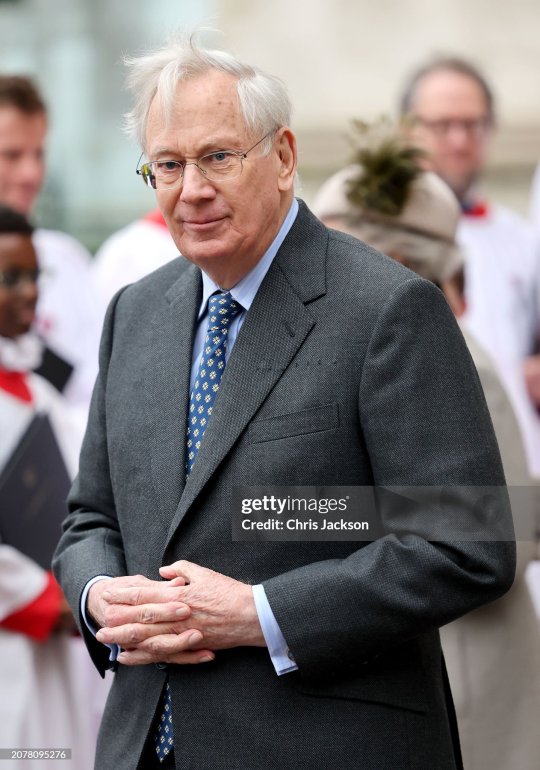
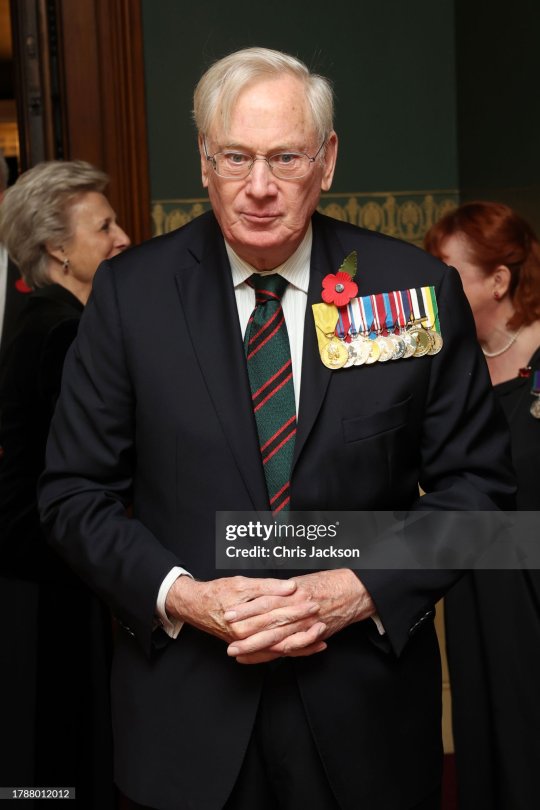
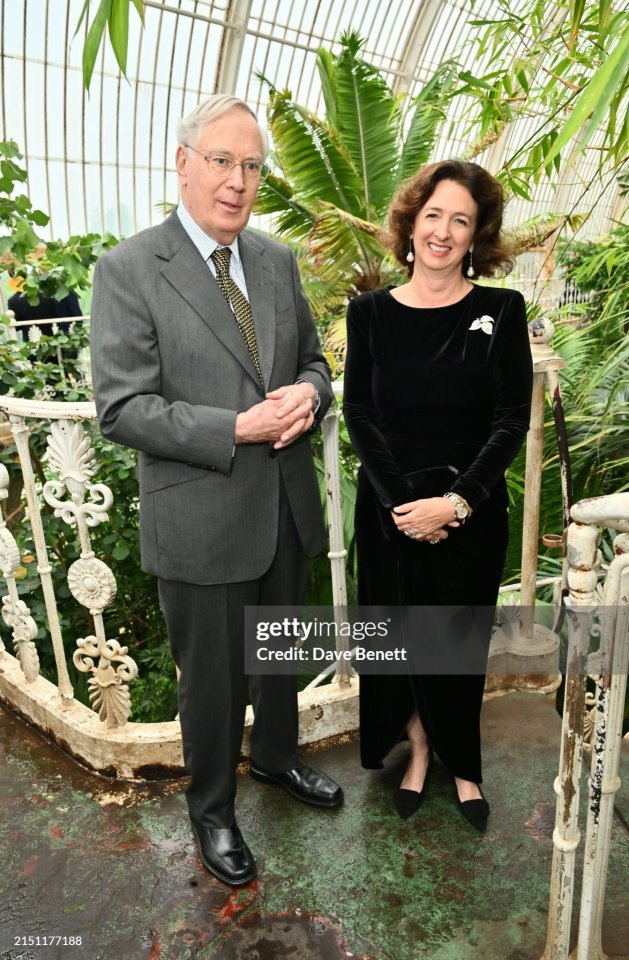
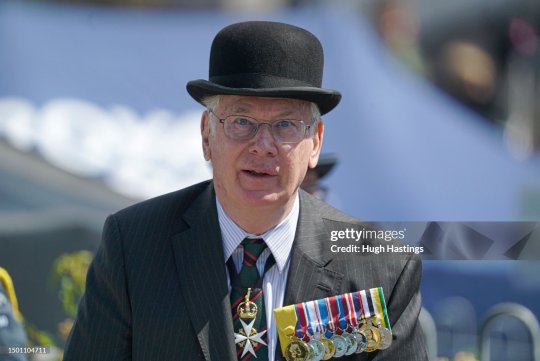
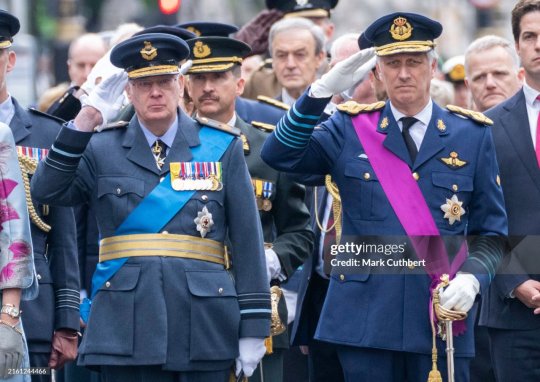
Tall, spectacled and reserved looking, he wasn't high in the line of fuckable royals until after the death of Queen Elizabeth II. The Duke isn’t the most handsomest guy being British royalty, but he has that "nerdy hot" thing going on having matured into a fine silverfox.
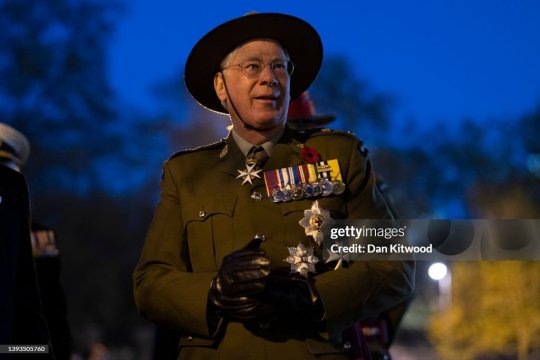

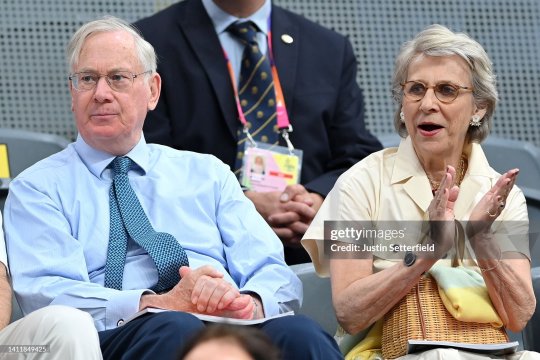
Prince Richard attended Wellesley House School at Broadstairs and Eton College. In 1963, he matriculated at Magdalene College, Cambridge, where he read architecture, graduating with the degree of Bachelor of Arts in June 1966. In 1966, Richard joined the Offices Development Group in the Ministry of Public Building and Works for a year of practical work. He returned to Cambridge in 1967, completing both parts of the Diploma in Architecture degree in June 1969. Upon passing his exams, he became a practicing architect in London.
After the death of his elder brother, William, he was in direct line to inherit his father's dukedom, to which he succeeded in 1974.
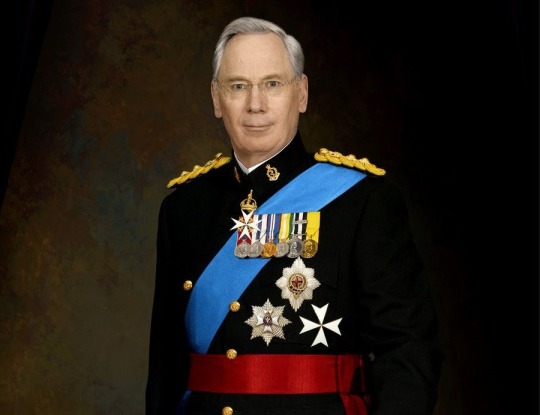

The Duke occasionally represents the royal family at official functions when the monarch can't be there. He also has myriad patronages under his purview, and is the royal family's Trustee of the British Museum.





He married Birgitte van Deurs Henriksen on 8 July 1972; the Duke and Duchess of Gloucester have three children. Other than the fact that I think he's cute and that he was practiced as an architect, I have no other research to offer you.

49 notes
·
View notes
Text
MCU Timeline: Doctor Strange
Thousands of years ago:
The Father of the Mystic Arts and the first Sorcerer Supreme, Agamotto, creates a relic, the Eye of Agamotto, to house the Time Stone within.

He also builds three Sanctums in places of power (modern Hong Kong, London and New York), which together create a protective shield around the Earth.
Agamotto founds an order of sorcerers to protect the Sanctums -the Masters of the Mystic Arts.
Centuries ago - a Celtic woman who would become known as the Ancient One is born. She becomes a sorcerer and then the Sorcerer Supreme. Over the next centuries, she draws energy from the Dark Dimension to stay alive and protect reality from mystical threats until she can pass on her mantle to the next Sorcerer Supreme.

June 20, 1974 - Jonathan Pangborn is born.

Early December 2014 - Pangborn breaks his neck and is left paralyzed from the chest down with partial paralysis in both arms.

2015-2016 - Pangborn travels to Kamar-Taj in hopes of healing his injury. He studies the mystical arts until he learns to use his own magic to restore the lost function of his nervous system.
~November 2015:
In Kamar-Taj, Master Kaecilius and his zealots kill the librarian and steal pages from the Book of Cagliostro.

Master Wong becomes a librarian at Kamar-Taj.
Why November 2015: apparently it's somewhere between November 2015 and March 2016. To narrow it down, we can look at the portal Kaecilius escaped through. The location is likely in the central or northern US, and while the trees are bare, like in London, the lawn is green. That leaves us with November.
January 2016 - neurosurgeon Stephen Strange receives an award for his spinal fusion surgery.

End of January/February 1, 2016 - Stephen Strange speaks to WHIH Newsfront about new lifesaving medical techniques.
February 2, 2016:
~9:15 am - at Metro General Hospital, Strange finishes his surgery and helps Dr. Christine Palmer save her patient with a bullet in the brain.

~6 pm - Stephen Strange gets into a car accident on his way to the Neurological Society dinner.


~10 pm - Strange is found and taken to Metro General.

~11 pm, February 2 - 10 am, February 3 - he undergoes 11-hour surgery on his injured hands.

~Afternoon, February 3, 2016 - Stephen wakes up to find that he has permanent nerve damage to his hands.
~April 2016:
Surgery to remove external fixators.
Few days later - Dr. Palmer removes the bandages from his hands.
Late April - Strange meets with other surgeons to discuss his options, and asks them to try to speed up the healing of his hands with another surgery.
April - December 2016 - Strange undergoes rehabilitation and tries every method to restore the function of his hands, spending his entire fortune on a total of 7 procedures.

~May - he undergoes the surgery to place a stent in his radial artery.
~Summer 2016 - Stephen's physical therapist tells him that he saw one of his former patients, who was thought to be paralyzed, walking and promises to provide him with his file.


September/October 2016 - Stephen is rejected by his French colleague and takes his anger out on Christine. Offended, she leaves him.
November/December 2016:
Strange receives Pangborn's file from his physical therapist.
He meets Pangborn, who tells him about the place where he was healed - Kamar-Taj.
January 11, 2017 (Wednesday):
With his last money, Strange travels to Nepal in search of Kamar-Taj.
2:47 pm - he is attacked by local bandits, but is saved by the master of mystic arts Mordo.

3 pm - Mordo takes him to Kamar-Taj. The Ancient One shows Stephen the multiverse, then throws him back out on the street.
8 pm - five hours later, Mordo "convinces" the Ancient One to accept Strange into the order.

Morning, January 12, 2017 - Stephen Strange begins his training in the mystic arts.
Winter 2017 - Kaecilius successfully deciphers the stolen pages, and he and his zealots contact Dormammu. The ruler of the Dark Dimension gives Kaecilius the power to fold matter outside the Mirror Dimension.
End of January 2017:
Strange meets Wong when he brings finished books to the library.
During a lesson on portals, the Ancient One sends Strange to Mount Everest and leaves him there until he creates a portal to return to Kamar-Taj before he dies of hypothermia.


January 12 - November 2, 2017 - Stephen Strange studies the mystic arts in Kamar-Taj.
October 2017:
Stephen shaves his beard, leaving a goatee.

He tells Wong about Beyoncé.
And then steals books from him through portals while the librarian gets acquainted with the singer’s work.
Stephen learns astral projection and the Ancient One teaches him how to use the Mirror Dimension.
November 1, 2017:
Mordo teaches him how to fight and tells him about Kaecilius and the relics.
~3 am, Nov 2 (Nepal) - in an empty library, Strange studies the Book of Cagliostro, the book of time. He takes the Eye of Agamotto to practice the spell and restore the stolen pages of the book.
Before he can break reality, he is stopped by Mordo and Wong, who tell him of the dangers of playing with time. They then finally tell Strange of the Order's purpose.
Kaecilius and his zealots attack the Sanctum in London and kill its master as he attempts to escape to Kamar-Taj through the door connected to it.
The blast from Kaecilius' spell sends Stephen flying through another door, into the New York Sanctum.
Kaecilius and his zealots come to the Sanctum and kill Daniel Drumm, its master.
Strange fights them.
They break the Cloak of Levitation display case. Levi bonds with Strange and helps him fight, but one of the zealots manages to stab Strange in the chest.
7:10 pm, Nov 1 (NYC)/4:10 am, Nov 2 (Nepal) - Stephen opens a portal to Metro General, where Christine saves him while he, in astral form, fights the zealot and kills him with Christine's help.

Note: While the day and month on this monitor appear to be accurate, the year is not. It couldn't be 2016 for several reasons. Here are the main ones: 1) Strange's accident happened in February 2016. He has undergone 7 surgeries. It would take him a whole year. 2) He needed enough time to study the mystic arts up to that point. Almost a year sounds about right. Add that to the time from point 1.
~8 pm - Strange returns to the Sanctum to find that Kaecilius has escaped.
The Ancient One arrives and makes Stephen the master of the New York Sanctum.
He refuses to be a warrior and tells her and Mordo that he knows how she has lived so long - by drawing power from the Dark Dimension.
Kaecilius and his zealots return to the Sanctum. Strange opens the Mirror Dimension, and he and Mordo have to flee from Kaecilius, who overpowers them in this Dimension.
The Ancient One comes to the rescue and fights Kaecilius, but he wounds her and she falls from a skyscraper outside the Mirror Dimension.
9:30 pm - Strange and Mordo follow her, and Stephen takes her to the Metro General ER.

The Ancient One and Strange talk in their astral bodies about the meaning of life and that it is time for her to go. She dies on the operating table during the first snow.

Same time, 9:30 am, Nov 2 (Hong Kong) - Kaecilius and the two remaining zealots arrive at the final Sanctum and battle Wong and the other sorcerers. Kaecilius defeats them and brings Dormammu to Earth.

Note: This is probably the most ridiculous time difference mistake Marvel has made. When it's 9:30 PM in New York, it's 9:30 AM in Hong Kong. And 9 AM doesn't look like that at all. Marvel forgot about the time difference and just made it the same time as New York. By the way, they didn't forget about the time difference between Nepal and New York before that. How are we going to fix this? There are 3 options: 1) Hong Kong was already absorbed into the Dark Dimension before Kaecilius arrived there. Lol. 2) Kaecilius folded reality so that the city ended up in the same time zone as New York. 3) Open our minds and imagine that this is actually daytime.
~10 pm - Christine and Stephen have a moment in the operating room.
November 2 (Hong Kong and Nepal), 2017:
~8 am (Nepal)/~10:15 am (Hong Kong) - Stephen gives Mordo a pep talk and they head off to fight Kaecilius at the Hong Kong Sanctum.
They arrive to find that the Sanctum has fallen and Dormammu has already begun to consume the city.
Strange uses the Time Stone to reverse the damage and resurrect Wong.
Kaecilius breaks the spell, so the damage to the Sanctum is not completely reversed, and Dormammu continues to consume the Earth.
Strange figures out how to defeat him and goes to the Dark Dimension to trick him with a time loop.
After countless iterations of "Dormammu, I've come to bargain", Dormammu finally gives in and leaves Earth, taking Kaecilius and his zealots with him.
Strange completes the restoration of the Sanctum.
Mordo leaves the Order.
Days later, November 2017:
The damage to Kamar-Taj has been repaired.
Strange returns the Eye of Agamotto to where he took it until he can master its power.
Wong informs him that there is an Infinity Stone inside of it.
Months later, ~May 2018 - Mordo comes to Jonathan Pangborn and takes away his magic, leaving him paralyzed.

Why it's most likely May 2018: It's unlikely that the Pangborn incident would have gone unnoticed by Strange. He would have immediately started looking for Mordo. At the same time, Mordo would have been hunting down other sorcerers and causing panic among them. That doesn't seem to be what happened. What seems to have happened is that the sorcerers had more important things to do immediately after the incident. Including Mordo. And that something is most likely The Snap in (as far as I know at the moment) May 2018. "Many months" from November 2017 fits that well.
MCU Timelines: Phases One and Two MCU Timeline: Black Widow MCU Timeline. Captain America: Civil War
#marvel#mcu#doctor strange#stephen strange#karl mordo#the ancient one#dormammu#mcu timeline#christine palmer#wong
18 notes
·
View notes
Text




Kansas City, Missouri. June 29th 1974, evening show (8:30 pm). Elvis is wearing the 1974 American Eagle jumpsuit. Photography by Sean Shaver ©
56 notes
·
View notes
Text
Gaps Between Character Appearances: Flash vol. 1
Basically what it says on the tin: an examination of the longest amounts of time a character was absent for during the Silver/Bronze Age Flash run.
Heroes and Supporting Cast:
Barry Allen: Since he was the main character, Barry was, unsurprisingly, basically in every issue of the Flash. There are therefore no significant gaps in his appearances.
Iris West-Allen: Iris was in pretty much every issue from 1956 to 1979, when she was killed by the Reverse-Flash. She then disappeared from the comic until 1985, when she returned for the end of the Trial of the Flash arc---an absence of six years.
Henry and Nora Allen: Their biggest absence was a seven-year gap between 1966 and 1973. There was then a second large gap between their appearance in 1973 and their reappearance in 1978.
Daphne Dean: Her biggest gap was an 11-year disappearance from 1966 to 1977. She then had another large gap between 1977 and 1982.
Ira West: His biggest gap was a 3-year gap between 1975 and 1978. He then pretty much disappeared from the book entirely after 1979.
Solovar: His biggest absence was a 13-year gap between 1965 and 1978.
Wally West: As Kid Flash, he appeared pretty consistently, either with Barry or on his own, until the very end of the run. The biggest gap is a two-year span between 1981 and 1983.
Patty Spivot: She didn't have any gaps of more than a year at any point between 1977 and and 1984, her full run on the series.
Fiona Webb: Fiona didn't have any gaps of more than a year for her full run on the series, either, which lasted from 1980 to 1985.
Joan Garrick: Her biggest gap in the Flash series was between 1978 and 1982 (the latter of which was her last appearance in Barry's run).
Jay Garrick: His biggest gap is the same 4-year gap as Joan's (between 1978 and 1982). He then disappears from the comic for its last three years (most of which were taken up by the never-ending Trial of the Flash arc).
Dexter Myles: His biggest gap was a roughly three-year period between 1970 and 1973.
Villains:
Professor Zoom the Reverse-Flash: The biggest gap in appearances he had prior to his death was the 5-year gap between 1969 ("Time Times 3 Equals--?") and 1974 ("Green Lantern---Master Criminal of the 25th Century"). After his death in 1980, he effectively disappeared for 3 years, reappearing in 1983 only to die again.
Abra Kadabra: His biggest gap in appearances was the five-year gap between 1972 ("The Flash in Cartoon-Land!") and 1977 ("Kill Me, Flash--Faster, Faster!"). There was also a 4-year gap between 1968 ("The Thief Who Stole All the Money in Central City") and 1972.
Gorilla Grodd: Grodd was absent for seven years, between 1971 (“Beyond the Speed of Life!”, otherwise known as the issue where Digger and James trip the Flash and he dies) and 1978 (“Beyond the Super-Speed Barrier").
Captain Cold: Captain Cold had two fairly sizeable gaps between appearances: a five-year gap between 1969 ("Captain Cold Blows His Cool") and 1974 ("The Hot-Cold War in Central City!"), and a four-year gap between 1977 ("To Believe or Not to Believe!") and 1981 ("Captain Cold's Cold, Cold Flame"). There was also a 3-year gap between his appearance in Showcase #8 and his appearance in Flash #114.
Mirror Master: Mirror Master had a number of two-year gaps between appearances, but never anything more than that. He was the most consistently appearing Flash villain.
Heat Wave: The biggest gap for Heat Wave was basically the same as for Captain Cold---a five-year gap between 1969 and 1974.
Captain Boomerang: Digger disappeared for four years between 1967 ("The Stupendous Triumph of the Six Super-Villains") and 1971 ("Beyond the Speed of Life!"). He was also missing for a 3-year period between 1976 (“The Last Day of June is the Last Day of Central City!”) and 1979 ("Road to Oblivion!").
Trickster: Trickster had a number of 3-year gaps between appearances---between 1965 ("The Trickster's Toy Thefts") and 1968 ("The Swell-Headed Super Hero"), between 1968 and 1971 ("Beyond the Speed of Life!"), between 1971 and 1974 ("The Day I Saved the Flash!", also known as writer Cary Bates' self-insert fanfic), between 1977 ("Prisoner of the Past") and 1980 ("If, At First You Don't Succeed"), and between 1980 and 1983 ("Dead Reckoning").
Weather Wizard: Weather Wizard was absent for six years, from 1967 ("The Race to the End of the Universe") to 1973 ("The Heart that Attacked the World").
Pied Piper: Hartley was absent from 1967 ("The Stupendous Triumph of the Six Supervillains") to 1972 ("The Flash of 1000 Faces"), a gap of five years. He also had a roughly four-year gap between 1977 ("Prisoner of the Past") and 1981 ("The Pied Piper's Paradox Peril"), and a 4-year gap between his first appearance in 1959 and his second appearance in 1963.
The Top: Roscoe was absent for six years, from 1967 ("The Stupendous Triumph of the Six Supervillains") to 1973 ("The Million-Dollar Death Trap!"). He was then basically absent from his death in 1976 to his return as a ghost in 1981, a five-year gap. His last appearance in the comic was in November 1981.
Golden Glider: Her biggest gap was a three-year absence from 1978 (“The Golden Glider’s Final Fling!”) to 1981 ("1981--A Flash Odyssey!"). Her last appearance in the comic was in October 1982.
Rainbow Raider: His biggest gap was a year-and-a-half-to-two year gap between 1981 ("A Stab in the Black!") and 1983 ("Trade Heroes and Win!").
Mr. Element/Dr. Alchemy: There was a six-year gap between Dr. Alchemy's appearance in 1958 ("The Man Who Changed the Earth!") and Mr. Element's appearance in 1964 ("Our Enemy, the Flash!"). Albert Desmond disappeared again from 1966 ("One Bridegroom Too Many!”) to 1972 ("The Curse of the Dragon’s Eye!”), a roughly six-year gap. He also disappeared for another six years between 1974 (“The Fury of the Fire-Demon!”) and 1980 (“Dr. Alchemy and Mr. Desmond"). His last appearance in the series was in September 1980. Alvin only appeared from July to September 1980 during Barry's run, and as such there were no gaps between his appearances.
Paul Gambi: Paul was absent for 10 years between 1963 and 1973, and then had a 9-year gap between 1976 and 1985.
Among the villains, Grodd had the biggest gap between his appearances, since he was gone from the pages of the Flash for seven years. Albert Desmond had the most frequent long absences, though, with three different six-year gaps.
Among the Rogues proper, The Top and the Weather Wizard had the largest gaps between appearances, though the Top's death meant that he was gone for more of the series than Weather Wizard.
#flash comics#flash rogues#the flash#barry allen#iris west#wally west#daphne dean#henry allen#nora allen#fiona webb#dexter myles#paul gambi#professor zoom the reverse flash#gorilla grodd#dr. alchemy#mr. element#albert desmond#alvin desmond#mirror master#the top#captain boomerang#pied piper#heat wave#weather wizard#golden glider#rainbow raider#the trickster
26 notes
·
View notes
Text
No quippy exclamation this week, because V and Emily delve into probably the worst, most shameful, most infuriating, just awful pair of people ever to be associated with fandom history: scifi authors and fucking monsters Marion Zimmer Bradley and Walter Breen. This is not a lighthearted episode in any way. Please heed the trigger warnings and take care of yourself if you choose to listen. History is not always fun and celebratory and silly Star Trek holidays. Sometimes it's going, "This horrible, ugly thing is part of our architectural foundation. Now what?" TW: CSA, rape, incest, total institutional failure to safeguard minors.
Sources
Marion Zimmer Bradley's Child Abuse
MZB Gave Us New Perspectives, All Right
Timeline of Events
MZB on Fanlore
Joanna Russ on Fanlore
1960s Fan History Outline, Chapter 8
Vonda N. McIntyre: Darkover Landfall Reviewed (1974)
The Guardian comments section (2014)
Tor.com Yanks MZB Birthday Tribute
Elizabeth Waters Deposition (1997)
Breendoggle on Fancyclopedia
The Great Breen Boondoggle on Fancyclopedia
Breendoggle Wiki
Walter Breen on Fanlore
This Week In Fandom History is a fandom-centric podcast that tells you… what happened this week in fandom history!
Follow This Week in Fandom History on Tumblr at @thisweekinfandomhistory
You can support the show via our Patreon at http://www.patreon.com/thisweekinfandomhistory.
If you have a fannish company, event, or service and would like to sponsor or partner with TWIFH, please contact us via the Tumblr link above.
Please remember to rate the show 5 stars on your listening platform of choice!
#fandom#fanfiction#fandom history#marion zimmer bradley#walter breen#breendoggle#mists of avalon#darkover#sci fi and fantasy#as emily says in the episode: rest in piss#Spotify
31 notes
·
View notes
Text
ℂ𝕣𝕖𝕖𝕡𝕪𝕡𝕒𝕤𝕥𝕒 ℍ𝕖𝕒𝕕𝕔𝕒𝕟𝕠𝕟𝕤: 𝔹𝕚𝕣𝕥𝕙𝕕𝕒𝕪𝕤 (+𝔸𝕘𝕖𝕤)
Jeff the Killer - June 2nd, 2000 (Age: 24)
Homicidal Liu - December 21st, 1991 (Age: 33)
Sully - December 21st, 1991 (Age: 33, though he's seven minutes younger than his twin, Liu)
Randy - July 25th, 1990 (Age: 34)
Keith - September 23rd, 1991 (Age: 33)
Troy - July 27th, 1991 (Age: 33)
Jane - September 1st, 1993 (Age: 31)
Mary - May 10th, 1992 (Age: 30)
Ben Drowned - April 23rd, 1990, died April 23rd 2002 (Age: Permanently 12, 34 if he were still alive today)
Ticci Toby - April 28th, 1994 (Age: 30)
Masky/Tim - June 19th, 1988 (Age: 36)
Hoodie/Brian - April 18th, 1989 (Age: 35)
Kate the Chaser - June 25th, 1995 (Age: 29)
Laughing Jack - Unknown but he was created on Christmas Eve, 1800s (Age: 200+)
Eyeless Jack - November 13th, 1994, died May 20th, 2011 (Age: 17 physically, actually in his 30s)
Slenderman and his brothers - Honestly no one ones. Some say they've been around since the 1600-1700s (Ages: 1000+)
Sally - April 5th, 1958, died April 5th, 1966 (Age: Permanently 8, 66 if she were alive today)
Dr Smiley - October 20th, 1984 (Age: 40)
Nurse Ann - October 31st, 1983 (Age: 41)
Nina - February 2nd, 1997 (Age: 27)
Candy Pop - Unknown but is said to have been created sometime in the 1400s (Age: 500-600+)
Jason the Toymaker - November 15th, 1940, died August 2nd, 1959 (Age: 19 by the time of his death, 84 if he were alive today)
The Puppeteer - July 25th, 1974, died November 30th, 1994 (Age: Permanently 20, 50 if he were still alive today)
Clockwork - November 6th, 1996 (Age: 28)
Rouge - January 7th, 1990 (Age: 34)
Wilson - August 27th, 1988 (Age: 36)
Zalgo - Unknown. He's been around since the beginning of time. (Age: Millions of years old)
Nathan - October 29th, 1990 (Age: 34)
Bloody Painter - October 1st, 1992 (Age: 32)
Chris Revenge - April 6th, 2000 (Age: 24)
Vicky Genocidal - December 16th, 1996 (Age: 28)
Hannah the Killer - October 31st, 1999 (Age: 25)
Kagekao - December 29th, 1994 (Age: 30)
Laughing Jill - Unknown, possibly around the same time as Jack (Age: 200+)
Sadie - October 21st, 1996, died March 12th, 2014 (Age: Permanently 18, 28 if she were alive today)
Hobo Heart - August 31st, 1900s (Age: 100+)
Cat Hunter - January 16th, 1990 (Age: 34)
Chris the Revenant - December 28th, 1999 (Age: 25)
X-Virus - December 12th, 1996 (Age: 28)
Dollmaker - June 13th, 2001 (Age: 23)
Frankie the Undead - September 13th, 1924, died sometime in 1974 (Age: Permanently 50, 100 if he were still alive today)
Judge Angels - April 2nd, 1998 (Age: 26)
Lifeless Lucy - April 5th, 1987, died April 5th, 1997 (Age: Permanently 10, 37 if she were alive today)
Lost Silver - June 21st, 1992, died sometime in August 2004 (Age: Permanently 12, 32 if he were still alive)
Glitchy Red - Unknown, is said to have been created sometime in 1990-1994 during the early stages of Pokemon Red/Blue (Age: Likely somewhere in his his late 20s-early 30s)
Dr. Locklear - March 7th, 1634, died sometime in 1665 during the Great Plague (Age: 30 by the time of his death, 390 if he were still alive today)
Lulu - February 15th, 1999, died sometime in 2013 (Age: Permanently 14, 25 if she were still alive)
Killing Kate - October 29th, 1996 (Age: 28)
Screaming Dawn (oc) - April 23rd, 1996 (Age: 28)
Queen Blackheart (oc) - October 24th, 1630, died March 16th, 1692 (Age: Permanently 62, 300+ in demon years)
Smiles (oc) - September 16th, 1999 (Age: 25)
The Tod Killer (oc) - March 12th, 1997 (Age: 28)
Night Stalker (oc) - July 20th, 2000 (Age: 24)
22 notes
·
View notes
Text

LETTERS FROM AN AMERICAN
August 8, 2024
Heather Cox Richardson
Aug 09, 2024
Fifty years ago, on August 9, 1974, Richard M. Nixon became the first president in U.S. history to resign.
The road to that resignation began in 1971, when Daniel Ellsberg, who was at the time an employee of the RAND Corporation and thus had access to a top-secret Pentagon study of the way U.S. leaders had made decisions about the Vietnam War, leaked that study to major U.S. newspapers, including the New York Times and the Washington Post.
The Pentagon Papers showed that every president from Harry S. Truman to Lyndon B. Johnson had lied to the public about events in Vietnam, and Nixon worried that “enemies” would follow the Pentagon Papers with a leak of information about his own decision-making to destroy his administration and hand the 1972 election to a Democrat.
The FBI seemed to Nixon reluctant to believe he was being stalked by enemies. So the president organized his own Special Investigations Unit out of the White House to stop leaks. And who stops leaks? Plumbers.
The plumbers burglarized the office of Ellsberg’s psychiatrist in California, hoping to find something to discredit him, then moved on to bigger targets. Together with the Committee to Re-elect the President (fittingly dubbed CREEP as its activities became known), they planted fake letters in newspapers declaring support for Nixon and hatred for his opponents, spied on Democrats, and hired vendors for Democratic rallies and then scarpered on the bills. Finally, they set out to wiretap the Washington, D.C., headquarters of the Democratic National Committee, in the fashionable Watergate office complex.
Early in the morning of June 17, 1972, Watergate security guard Frank Wills noticed that a door lock had been taped open. He ripped off the tape and closed the door, but on his next round, he found the door taped open again. Wills called the police, who arrested five men ransacking the DNC’s files.
The White House immediately denounced what it called a “third-rate burglary attempt,” and the Watergate break-in gained no traction before the 1972 election, which Nixon and Vice-President Spiro Agnew won with an astonishing 60.7% of the popular vote.
But Bob Woodward and Carl Bernstein, two young Washington Post reporters, followed the sloppy money trail back to the White House, and by March 1973 the scheme was unraveling. One of the burglars, James W. McCord Jr., wrote a letter to Judge John Sirica before his sentencing claiming he had lied at his trial to protect government officials. Sirica made the letter public, and White House counsel John Dean immediately began cooperating with prosecutors.
In April, three of Nixon’s top advisors resigned, and in May the president was forced to appoint former solicitor general of the United States Archibald Cox as a special prosecutor to investigate the affair. That same month, the Select Committee on Presidential Campaign Activities, informally known as the Senate Watergate Committee, began nationally televised hearings. The committee’s chair was Sam Ervin (D-NC), a conservative Democrat who would not run for reelection in 1974 and thus was expected to be able to do the job without political grandstanding.
The hearings turned up the explosive testimony of John Dean, who said he had talked to Nixon about covering up the burglary more than 30 times, but there the investigation sat during the hot summer of 1973 as the committee churned through witnesses. And then, on July 13, 1973, deputy assistant to the president Alexander Butterfield revealed the bombshell news that conversations and phone calls in the Oval Office had been taped since 1971.
Nixon refused to provide copies of the tapes either to Cox or to the Senate committee. When Cox subpoenaed a number of the tapes, Nixon ordered Attorney General Elliot Richardson to fire him. In the October 20, 1973, “Saturday Night Massacre,” Richardson and his deputy, William Ruckelshaus, refused to execute Nixon’s order and resigned in protest; it was only the third man at the Justice Department—Solicitor General Robert Bork—who was willing to carry out the order firing Cox.
Popular outrage at the resignations and firing forced Nixon to ask Bork—now acting attorney general—to appoint a new special prosecutor, Leon Jaworski, a Democrat who had voted for Nixon, on November 1. On November 17, Nixon assured the American people that “I am not a crook.”
Like Cox before him, Jaworski was determined to hear the Oval Office tapes. He subpoenaed a number of them. Nixon fought the subpoenas on the grounds of executive privilege. On July 24, 1974, in U.S. v. Nixon, the Supreme Court sided unanimously with the prosecutor, saying that executive privilege “must be considered in light of our historic commitment to the rule of law. This is nowhere more profoundly manifest than in our view that 'the twofold aim (of criminal justice) is that guilt shall not escape or innocence suffer.'... The very integrity of the judicial system and public confidence in the system depend on full disclosure of all the facts….”
Their hand forced, Nixon’s people released transcripts of the tapes. They were damning, not just in content but also in style. Nixon had cultivated an image of himself as a clean family man, but the tapes revealed a mean-spirited, foul-mouthed bully. Aware that the tapes would damage his image, Nixon had his swearing redacted. “[Expletive deleted]” trended.
In late July 1974, the House Committee on the Judiciary passed articles of impeachment, charging the president with obstruction of justice, abuse of power, and contempt of Congress. Each article ended with the same statement: “In all of this, Richard M. Nixon has acted in a manner contrary to his trust as President and subversive of constitutional government, to the great prejudice of the cause of law and justice and to the manifest injury of the people of the United States. Wherefore Richard M. Nixon, by such conduct, warrants impeachment and trial, and removal from office.”
And then, on August 5, in response to a subpoena, the White House released a tape recorded on June 23, 1972, just six days after the Watergate break-in, that showed Nixon and his aide H.R. Haldeman plotting to invoke national security to protect the president. Even Republican senators, who had not wanted to convict their president, knew the game was over. A delegation went to the White House to deliver the news to the president that he must resign or be impeached by the full House and convicted by the Senate.
In his resignation speech, Nixon refused to acknowledge that he had done anything wrong. Instead, he told the American people he had to step down because he no longer had the support he needed in Congress to advance the national interest. He blamed the press, whose “leaks and accusations and innuendo” had been designed to destroy him. His disappointed supporters embraced the idea that there was a “liberal” conspiracy, spearheaded by the press, to bring down any Republican president.
LETTERS FROM AN AMERICAN
HEATHER COX RICHARDSON
#Letters From An American#Heather cox Richardson#Nixon#history#American History#the presidency#Watergate
24 notes
·
View notes
Text










70’s Chicago CASHBOX Advertisements 1. September 25th, 1971 2. March 9th, 1974 3. March 23rd, 1974 4. June 29th, 1974 5. October 19th, 1974 6. August 2nd, 1975 7. November 15th, 1975 8. January 31st, 1976 9. April 16th, 1977 10. April 16th, 1977 (via: archive.org)
54 notes
·
View notes
Text
On Aug. 8, 1974, Republican U.S. President Richard Nixon shocked the nation. Following more than a year of multiple investigations into his administration over the Watergate scandal, Nixon went on television and announced that he would be resigning from office the following day.
“To continue to fight through the months ahead for my personal vindication would almost totally absorb the time and attention of both the president and the Congress in a period when our entire focus should be on the great issues of peace abroad and prosperity without inflation at home,” Nixon said as the nation watched. “Therefore, I shall resign the presidency effective at noon tomorrow.”
Less than two years earlier, Nixon had defeated South Dakota Sen. George McGovern, the Democratic Party’s candidate, in a landslide victory that pundits had compared to former President Franklin Roosevelt’s historic reelection in 1936. But now, Nixon became the first president in the nation’s history to step down before finishing his term. Americans were stunned and relieved. But even as Nixon’s administration has come to represent the ultimate rupture of a presidency, his was in fact the third consecutive administration to end in disruption in the mid-20th century. John F. Kennedy had been assassinated in November 1963. Lyndon Johnson had unexpectedly withdrawn from his reelection campaign in 1968. And then, six years later, Nixon would resign.
Nor was the outcome inevitable, as it may seem today. Nixon had fought when Congress, a grand jury, special prosecutors, judges, and reporters tried to find out what his role had been in the break-in at the Democratic National Committee headquarters in June 1972, and whether he had obstructed subsequent investigations. Just a few days before Nixon’s announcement, a mere 31 percent of Republicans polled by Gallup felt that he should no longer hold the office.
The pressure had mounted. On July 24, in United States v. Nixon, the Supreme Court ruled that the president must turn over secret White House tape recordings—one of which contained a “smoking gun” in which legislators could hear him in a conversation with advisor H.R. Haldeman, agreeing that they should persuade the CIA to stop the FBI from looking into the matter. On Aug. 7, Sen. Barry Goldwater, Senate Minority Leader Hugh Scott, and House Minority Leader John Rhodes—all Republicans—met with Nixon and said that if the House voted to send them articles of impeachment, which seemed likely, many in the GOP would join the Democrats in voting to remove him from office. Nixon’s job approval, according to Gallup, fell to 24 percent, with more than a majority of the country thinking he should leave. That’s what he did.
On Aug. 9, at 9:31 a.m., the president entered into the East Room with the first lady, Pat Nixon, and addressed a small group of cabinet officials, friends, and supporters. As he held back tears during different moments of his talk, Nixon advised everyone who was surrounding him: “Aways give your best. Never get discouraged, never be petty. Always remember, others may hate you, but those who hate you don’t win unless you hate them, and then you destroy yourself.”
He then went down to the Diplomatic Reception Room, where he wished the new president, Gerald Ford, good luck. Nixon walked up the staircase to the helicopter that was waiting for him outside, turned to look at the White House one last time as president, waved with his fingers shaped as a “V” for victory, and then flew off to Andrews Air Force Base, where Air Force One brought him back to California.
“With his departure,” wrote Jules Witcover in the Washington Post on Aug. 9, “he leaves behind a political legacy of negativism that far transcends the damage to his own party.”
Nixon’s presidency came to an abrupt end, but the resignation was just the final stage of a tumultuous era. The nation had been embroiled in fierce internal battles over issues such civil rights and the war in Vietnam. College campuses had been rocked by ongoing protest. Even the clothing that a person chose to wear sent strong signals about what they stood for. The Democratic Convention in August 1968 in Chicago had been a fiasco. The whole world watched as anti-war activists clashed with Mayor Richard Daley’s police force; inside the convention, anti-war delegates fought with supporters of then-Vice President Hubert Humphrey, who had become the nominee when Johnson withdrew from the race
And all of this took place after there had been a series of assassinations that started with Kennedy. When Martin Luther King Jr. was killed in Memphis, Tennessee, in April 1968, unrest swept through major cities. When an assassin killed one of the late president’s brothers, Sen. Robert F. Kennedy, in June, many young people lost all hope.
It is not a surprise that in 1974, Knopf published Robert Caro’s The Power Broker, a masterful work that would come to be considered one of the greatest nonfiction books of the century. Caro traced the career of the legendary unelected civil servant Robert Moses, who started his career as an idealistic reformer but ended as someone who did whatever was necessary, and to whomever, in his quest for total power. “The real lesson of Moses’ career,” wrote a reviewer in the Los Angeles Times, “and it is not nearly so difficult to understand in light of recent events such as Watergate—is the way the techniques of opinion manipulation and power use can operate within democracy.”
But another perspective suggested that perhaps Nixon’s resignation demonstrated that “the system worked,” with the optimists wanting to believe that a scandalous president being forced to give up power would restore the trust in government and elected officials that Vietnam and Watergate had stolen from them.
“No one can rejoice in the events which culminated in the resignation of the President,” noted American Bar Association President Chesterfield Smith in a newspaper interview. “We can, however, find comfort in the fact that … when our system for the administration of justice was tested—by perhaps its greatest challenge of all time—that system proved equal to the task.”
Such feelings did not last long. History took a different turn, and public distrust of government worsened. In 2024, Americans have trouble believing that their leaders will serve the public interest. According to Pew, a mere 22 percent trust the federal government to do what is right “just about always.” Though there have been some moments of improvement, such as at times during Ronald Reagan’s presidency and in the years immediately after 9/11, the public trust percentages upward of 70 percent that were normative in the early 1960s currently feel impossible to recreate. Even in recent years, when trust has grown slightly higher, positive numbers remain far lower than before.
So why didn’t Nixon’s resignation make things better? How did an act of such massive historical weight fail to cure the ills that were afflicting the body politic?
To begin with, Richard Nixon was never held accountable. Just one month after he told Americans that he was stepping down, his successor, Ford—who Nixon had appointed to be his vice president in 1973, when Spiro Agnew resigned in scandal—pardoned Nixon for any crimes that he might have committed. Seeking to heal the nation, Ford did the opposite. Nixon, who in 1977 told television interviewer David Frost that if a president did something, then it was legal, went on to have a career writing books and giving advice to future leaders. Rather than a criminal, he was treated as a statesman.
Public distrust also never went away because Vietnam and Watergate created a more vigilant outlook, with institutional support, as more people on both the left and right were constantly on the lookout for wrongdoing. Investigative journalists, nonprofit organizations, and good government groups such as a Common Cause were determined to keep holding elected officials accountable. So Americans naturally learned more about the bad things that politicians could do, such as when Sen. Frank Church’s committee revealed the illicit activities of the CIA during the Cold War, as the forces of reform struggled to clean the government so that it work be better. The quest for improvement tapped into a distrust of government that had always been part of the United States since its founding, when the country was created in a rebellion against a corrupt and oppressive British government.
Had this healthy skepticism been balanced with messages about the virtues of what Washington could do, such as when elderly Americans received health care through Medicare or poor young kids received nutrition through school lunch programs, public opinion might have improved. But instead, a conservative movement swept through the nation. Conservatism targeted the ills of government. As Reagan declared in his inaugural address, “government is not the solution to our problem; government is the problem.”
These feelings only intensified as more conservatism became more entrenched in politics and as the United States moved further away from Roosevelt’s New Deal and Johnson’s Great Society. Even some Democratic leaders such as President Bill Clinton, though still liberal, embraced Reagan’s logic as well. During his State of the Union address in 1996, Clinton proclaimed that “the era of big government” was “over.”
As if all of this was not enough, the intensification of hyperpolarization over the past two decades has caused red and blue Americans to distrust officials from the other side. To be sure, strong partisanship is a good thing. Robust parties offer Americans real mechanisms within the mainstream political system to express differences and to struggle over policy. Parties have helped to provide coherence to the country’s incredibly fragmented government.
But when “affective polarization” became normative, as political scientist such as Liliana Mason have argued, intense emotionalism left members of each party disliking the other and disgusted by their opponents to the point that there could be no reconciliation. Fundamental differences have been supplanted by fundamental distrust. And social media has created multiple opportunities to spread all kind of information regardless of its veracity, which further fuels these feelings.
Besides the sorts of tensions that this culture of distrust has created, the sentiment also makes it more difficult for the government that we all need to survive, thrive, and do good work.
Rather than hoping that somehow conditions will miraculously change, the time has come for a new reform agenda, where the country’s elected officials take the concerns that were at the root of the good-faith skepticism that took hold when Nixon stepped down. Instead of just railing against those in charge, Americans need more dialogue about improving processes, procedures, and rules—while demanding better leadership—in order to produce a government that is always looking out for the national interest.
21 notes
·
View notes
Text
RUDA’S OFFICIAL PROFILE ✰


Ogawa Ruda (Japanese: おがわるだ; born March 16, 2001) is a Japanese singer and dancer under SM Entertainment. She is a member of the South Korean co-ed group NCT and its subunits NCT U and NCT WISH.
✰ NCT MENU ✰ RUDA’S MASTERLIST

╭┈──── ◌ೄ◌ྀ ˊˎ
╰┈➤ ❝ BASIC INFO !
BIRTH NAME. Ogawa Ruda (おがわるだ)
NAME MEANING. The name was chosen by her mother. The meaning of the name is unknown.
KOREAN NAME. Oh Luda (오루다)
NAME MEANING. The name she chose for herself after moving to Korea. It's her birth name written in Hangeul.
ENGLISH NAME. Anna Ogawa
NAME MEANING. The name Yushi chose for her.
NICKNAMES. Aru
DATE OF BIRTH. March 16, 2001
PLACE OF BIRTH. Kochi, Japan
HOMETOWN. Kochi, Japan
ETHNICITY. Japanese
NATIONALITY. Japanese
CITIZENSHIP. Japanese
FAMILY. Ogawa Masahiro (father, 1972), Ogawa Chiyo (mother, 1974), Ogawa Kei (sister, 2006)
LANGUAGES. Japanese (native, Tosa dialect), Korean (fluent, Gyeonggi dialect)
BLOOD TYPE. AB+
WESTERN ZODIAC SIGN. Pisces
CHINESE ZODIAC SIGN. Snake
GENDER. female
PRONOUNS. she/her
ROMANTIC AND SEXUAL INTERESTS. undisclosed
EYE COLOR. dark brown
HAIR COLOR. black
HEIGHT. 171cm (5’7”)
DOMINANT HAND. right
PIERCINGS. 2 in total; left earlobe (1), right earlobe (1)
TATTOOS. 0
MEDICAL CONDITIONS. anxiety disorder, depression
ALLERGIES. peanuts, pollen
VOCAL TONE. Kim Sejeong & IVE’s Liz
RAP STYLE. (G)-IDLE’s Shuhua
DANCE STYLE. LE SSERAFIM’s Kazuha
╭┈──── ◌ೄ◌ྀ ˊˎ
╰┈➤ ❝ CAREER !
OCCUPATION. K-pop Idol
STAGE NAME. Ruda (루다, ルダ)
NICKNAMES. Dad, mom, Akkaru
COMPANY. SM Entertainment (2016–present)
TRAINING PERIOD. 4 years 4 months (June 2016–October 2020)
DEBUT DATE. 12 October 2020 (NCT, NCT U), 21 February 2024 (NCT WISH)
YEARS ACTIVE. 2020–present
GROUP. NCT (2020–present)
SUBUNITS. NCT U (2020–present), NCT WISH (2023–present)
POSITIONS. Vocalist (NCT), Main Vocalist, Visual, Center, Face of the Group (NCT WISH)
REPRESENTATIVE EMOJI. 🦆
REPRESENTATIVE COLOR. Crusta
SOLO FANDOM NAME. Daluvs
ROLE MODEL. KARA's Nicole, Girls' Generation's Taeyeon, Sooyoung, and Yuri
SIGNATURE.

╭┈──── ◌ೄ◌ྀ ˊˎ
╰┈➤ ❝ RANKING !
10 - outstanding, 9 - excellent, 8 - very good, 7 - good, 6 - above average, 5 - average, 4 - below average, 3 - weak, 2 - very weak, 1 - never learned
STAR QUALITY. 7.5/10
VISUALS (KOREAN BEAUTY STANDARDS). 8.5/10
VISUALS (JAPANESE BEAUTY STANDARDS). 8/10
VOCALS. 2020: 8/10 2024: 9.5/10
RAP. 2020: 4.5/10 2024: 5/10
DANCE. 2020: 6/10 2024: 7.5/10
STAGE PRESENCE. 2020: 7/10 2024: 8/10
VARIETY SHOWS. 2020: 6/10 2024: 7/10
PUBLIC SPEAKING. 2020: 6/10 2024: 8/10
FAN SERVICE. 2020: 8/10 2024: 9/10
MEDIA TRAINING. 2020: 6/10 2024: 7.5/10
SONGWRITING. 2020: 3/10 2024: 3/10
PRODUCING. 2020: 1/10 2024: 1/10
CHOREOGRAPHING. 2020: 3/10 2024: 4.5/10
ACTING. 2020: 4/10 2024: 6/10
MODELING. 2020: 5/10 2024: 7/10
LEADERSHIP. 5.5/10
TEAMWORK. 7.5/10
DISCIPLINE. 9/10
EMOTIONAL RESILIENCE. 6.5/10
TIME MANAGEMENT. 7/10
╭┈──── ◌ೄ◌ྀ ˊˎ
╰┈➤ ❝ PERSONALITY !
MBTI TYPE. ENTP
MORAL ALIGNMENT. neutral good
Ruda's first impression is reserved but friendly. She is an introverted extrovert, and although she is quite shy and less talkative than most extroverts, being around people energizes her and she enjoys meeting new people and likes to initiate conversations in social situations.
Ruda is and has always been very sensitive to her emotions. She has a tendency to worry and overthink in stressful situations, and although she rarely expresses her worries out loud, her emotions are written all over her face. She will only admit her worries to someone she trusts and is close to. She cries easily and is prone to feeling sad/upset, but almost never gets angry.
Ruda’s need for attention developed early in life as a result of not getting enough attention at home. She requires support, validation, and affection, and is a highly affectionate person herself. She expresses affection through physical touch; she often hugs, holds hands, and touches people she is close to. She also shows affection through small actions/gifts, for example, she often buys drinks for the group after a long dance practice, ties their shoelaces, fixes them up, etc. She is very caring, especially towards the people she is close to, however she is more drawn to people who don’t need to rely on others.
Ruda is very curious and imaginative. She first discovered her artistic side in elementary school. She is drawn to art and other creative people; she has the desire to know people's stories and what makes them who they are. She often talks about different ideas (even if it means not realizing them), daydreams, and thinks about the 'what ifs'.
Ruda's biggest flaw is her insecurities. She believes she is never good enough and has a tendency to compare herself to other people. This was the most visible during her training years; she was driven not only by her ambition and determination to debut, but also because she always thinks she isn’t good enough. Even after debut, she often takes extra time to practice and attends extra classes to get better. The same thing applies to her appearance. Because of this, she takes criticism way too seriously and might blame herself when bad things happen, especially at low points in life. However, her insecurities make her extremely hardworking and ambitious.
Her other flaws include indecisiveness and short attention span. She has a difficulty paying attention to a task if something more interesting is present. Because of her indecisiveness, she sometimes makes risky decisions and is willing to take those risks, even if they may change her life or career.
As an idol, Ruda’s personality and appearance present a sweet, warm, and friendly, but also slightly shy girl-next-door image. She gives girlfriend energy and is especially known for her love for fans. She’s always eager to interact with fans in all ways possible and makes sure the fans feel seen by her; it’s common for her to remember fans, accept gifts and letters, and stop by for an autograph if a fan bumps into her on a street. Fans also often mention how hardworking she is. They respect Ruda for always wanting to improve and acknowledge her dedication.
One of Ruda's biggest strengths as an idol is public speaking. Despite her shyness, she is quite charismatic and very well-spoken on camera. She easily handles interviews and speeches and manages to give satisfying responses even in difficult situations. When it comes to variety shows, she is perfect for talk shows.
Her personality blends well with all NCT WISH members (some fans say she is a mix of all members), so she can easily get along with the whole group. Because she is the oldest, many members depend on her during tough times or "first times" and rely on her previous experience in NCT. Also, because of her caring nature, she is often called the mom of the group.
Ruda’s personality also manifests in her performances—Ruda is quite versatile on stage. She fits bright and slightly cute concepts best, but can adjust energy based on the stage. Most of her performances are marked by her signature wide smile that usually appears after she sings her line, a second before a camera moves to someone else. Although she excels in bright concepts, many fans love when she performs dark concepts—she's less skilled in those, but she exudes a tough and sultry-like energy that otherwise can't be seen.
Ruda’s biggest charm is her mix of her genuine ambition and her shy but friendly personality. She is viewed as a sweet, sincere, and even slightly innocent person.
PERSONALITY TRAITS. adaptable, adventurous, affectionate, ambitious, caring, curious, empathetic, hardworking, imaginative, indecisive, insecure, perfectionist, self-critical, sensitive, shy, sociable, supportive
STRENGTHS. makes people feel loved, values meaningful relationships, handles change easily, always works on improving and getting better, sincere about people and her interests
WEAKNESSES. overthinks and worries too much, takes criticism too seriously, struggles with open communication, bottles up her emotions, has people-pleasing tendencies
HABITS. folding hands in her lap, standing with hands placed on her hips, playing with her hands when nervous, listening in on others' conversations, smiling, spacing out, speaking softly, suppressing laughter, clicking pens, not putting things back in place
FEARS. being forgotten, needles
LOVE LANGUAGE (GIVING). quality time > physical touch > acts of service = gift giving > words of affirmation
LOVE LANGUAGE (RECEIVING). quality time > words of affirmation > physical touch > acts of service = gift giving
ATTACHMENT STYLE. anxious-preoccupied
HOBBIES. collecting photocards, shopping, skincare, watching k-dramas
LIKES. cats, conversations, cows, feeling like she belongs, hugs, iced americano, karaokes, meeting people, playing checkers, ramen, sweet flavors, theatres, white clothes
DISLIKES. bugs, cucumbers, drawing, having nothing to do, rain, rivalry, working out
╭┈──── ◌ೄ◌ྀ ˊˎ
╰┈➤ ❝ HISTORY !
Ogawa Ruda (Japanese: おがわるだ) was born in March 16, 2001 in Kochi, Japan. She is the first child of bakery owner Ogawa Chiyo and office worker Ogawa Masahiro. She has a sister named Kei born in 2006.
Ruda's childhood was deeply affected by her sister's illness; Kei was diagnosed with lymphoma cancer at age 2. Ruda's parents suddenly shifted all their attention to Kei without any explanation. They began to treat Ruda more like Kei's babysitter and less like their daughter. Ruda stated she felt abandoned, neglected, and unloved as a child. She felt uncomfortable at home and often refused to come home after school. In 2011, Kei beat cancer, but their parents’ different attitude towards the sisters stayed the same.
In elementary school, Ruda's music teacher recognized her singing talent and recommended her to join a music school club. She learned to sing and play piano there and was a part of the school choir. She did the same in middle school.
Ruda's middle school friends were fans of K-pop and eventually Ruda became interested too. She recalled admiring groups like KARA and Girls' Generation. In the last year of middle school, Ruda and her friends decided to try auditioning for different K-pop companies. In March 2016, their graduation month, they attended the 2016 SM Global Audition in Osaka. Ruda was the only one who passed. Despite the initial fights and disagreements with her parents, Ruda moved to South Korea and joined SM Entertainment in June 2016.
Ruda mentioned she struggled to showcase her vocal skills because she couldn't speak Korean. She trained with NCT members Yuming, Ika, Chei, and Sona, aespa members Karina, Winter, and Ningning, and Hearts2Hearts members Jiwoo and Yuha. She was also considered to debut in aespa, but was replaced by Giselle.
Ruda was introduced as a new NCT member on September 23, 2020, during a VLive broadcast held by NCT. She officially debuted as a member of NCT on October 12, 2020, with the release of “NCT RESONANCE Pt.1”.
On May 24, 2023, SM Entertainment released a statement saying Ruda would debut in NCT’s sixth and final unit by participating in a survival show “NCT Universe : LASTART”. The official lineup was revealed during the final episode and the group, tentatively named NCT New Team, released a pre-debut single "Hands Up" on October 8, 2023.
Ruda officially debuted as a vocalist, visual, center, and face of NCT WISH on February 28, 2024 with the release of the group’s first mini album “WISH” and its title track of the same name. She is the most popular member of NCT WISH.

✰ NCT MENU ✰ RUDA’S MASTERLIST

fill in this form to be added to the taglist !
requests are always open! submit a request or ask me anything !
this took me so long… but i’m happy with the result!
thank you for reading <3

© itsstarseason ✰
#itsstarseason✰#itsstarseason: ruda✰#itsstarseason: nct✰#itsstarseason: nct wish✰#nct wish female member#nct wish added member#nct female oc#nct female addition#nct female member#nct added member#nct addition#nct oc#kpop added member#kpop addition#fake kpop addition#kpop female addition#kpop female oc#kpop female member#fake kpop oc#fictional kpop oc#kpop oc#fictional idol addition#fake kpop idol#fictional kpop idol#fictional idol oc#fictional idol community#fictional kpop community#fake kpop member#fake idol community#fake idol oc
14 notes
·
View notes
Text
Resident Evil Characters Birthday Headcanons
A/N: I know I said I’d do middle names next but I was actually requested by someone to do birthdays first.
Hope you guys enjoy!
Leon S. Kennedy

🎂 March 27, 1977 (Aries)
-Actually wasn’t born in the U.S, but in Italy.
-His parents were visiting his mother’s family (I like to think his mother was Italian bc Kennedy doesn’t really sound Italian lol).
-Doesn’t really like celebrating his birthday as he gets older. It’s not a day he downright hates, he just feels awkward getting a lot of attention.
Chris Redfield

🎂 May 2, 1973 (Taurus)
-Was huge as a baby
-Like literally, he was like 10 pounds when he was born
-He likes his birthday a normal amount. While not entirely extroverted about it, he prefers to have people to celebrate it with.
Ada Wong

🎂September 8, 1974 (Virgo)
-Not much is known to even her about her birth
-Though I would like to think she was born somewhere in China, but was given away by her mother at birth to a relative overseas.
-Does not celebrate her birthday. Hasn’t for years. She thinks it gets in the way of things (such as her work).
Sherry Birkin

🎂 February 4, 1988 (Aquarius)
-Honestly, I feel like she wasn’t planned.
-I also think her parents would forget her birthday more often than not due to the fact that they were always busy.
-While she doesn’t have a lot of good memories of her birthdays, she still loves celebrating her birthday nonetheless.
Ashley Graham

🎂 June 14, 1984 (Gemini)
-Was born in a wealthy coastal town in California (that her father was politically involved in at the time)
-Loved cheese as a kid and would insist on getting cheesecake as a birthday cake (she thought it was actually made of cheese)
-Her birthday is probably her favorite day of the year. I just know a massive sweet 16 took place at the White House back then.
That’s all! I think some of these might actually be canon but idk 🤷♀️
Unless something else is requested of me, I will do middle names next!
#resident evil#headcanons#resident evil headcanons#leon s kennedy#leon kennedy#chris redfield#ada wong#sherry birkin#ashley graham
32 notes
·
View notes